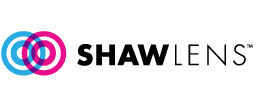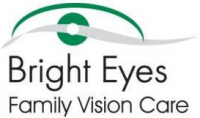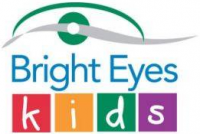Welcome to The Bright Eyes Podcast: Advice for Healthy Vision for All Ages. Your hosts are Dr. Nate Bonilla-Warford & Dr. Beth Knighton, residency-trained optometrist that provide eye exams for glasses and contacts, and specialty services including vision therapy, myopia control, orthokeratology, and sports vision training. Their mission to empower patients by providing the best in friendly, professional, and individualized eye care.
In this episode, Dr. Nate talks with Peter Shaw OD and Shaw Lenses
You can listen in the player below or read the transcript. The show is available via Stitcher, Google Play, iTunes, and the webplayer below. You can find all previous episodes here. If you have any questions or suggestions for future episodes, please email office@BrightEyesTampa.com.
Full Transcript:
Intro: 00:10 Welcome to the Bright Eyes Podcast, advice for healthy vision for all ages. Your hosts are Dr. Nathan Bonilla-Warford and Dr Beth Knighton, residency trained optometrist providing eye care to all ages with exams or glasses and contacts and specialty services including vision therapy, Myopia control, orthokeratology and sports vision training. Their mission is to empower patients by providing the best in friendly, professional and individualized eye care
Dr. Nate: 00:39 On location in Bellevue, Washington. This is Dr Nate Bonilla-Warford at the 2018 College of Optometrists and Vision Development meeting and it is the Bright Eyes podcast. I have a special guest Dr. Peter Shaw with me today. Hi Peter.
Dr. Peter Shaw: 00:58 Hi Nate. Thanks for inviting me to talk to you on this podcast. It's a great opportunity to talk about lenses.
Dr. Nate: 01:05 Excellent. Yes. I am excited about this because, uh, there's a, a useful tool that we have in our office called the Shaw Lens and I think that has some relation to you. Why don't you tell us a little bit about your background first and then we can talk about the Shaw Lenses.
 Dr. Peter Shaw: 01:21 So I started life as an optometrist with, with a, with a degree also in physics and computer science and practice for 35 years. But during that time I came across a lot of problems created by glasses that are unique to the fact that the glasses sit away from the eyes and not on the eye. And Shaw lenses is a comprehensive way of designing eyeglass lenses that eliminates the image difference. In other words, the size and image position that's common with many pairs of glasses made. So what we do is we actually designed lenses based upon exactly where the lenses fit on the face, taking into account both the prescription and the underlying magnification that glasses create. So this fixes is something called Aniseikonia, and Aniseikonia is the optometric word that describes the image difference and the end results in the inability to put images together in the brain.
Dr. Peter Shaw: 01:21 So I started life as an optometrist with, with a, with a degree also in physics and computer science and practice for 35 years. But during that time I came across a lot of problems created by glasses that are unique to the fact that the glasses sit away from the eyes and not on the eye. And Shaw lenses is a comprehensive way of designing eyeglass lenses that eliminates the image difference. In other words, the size and image position that's common with many pairs of glasses made. So what we do is we actually designed lenses based upon exactly where the lenses fit on the face, taking into account both the prescription and the underlying magnification that glasses create. So this fixes is something called Aniseikonia, and Aniseikonia is the optometric word that describes the image difference and the end results in the inability to put images together in the brain.
Dr. Nate: 02:25 So one thing that I really like about the Shaw lenses is, is I'm what I consider myself to be a binocular vision specialist, which means I take measurements and I measure how both eyes work together as a team. And one of the things that is unique about the Shaw lenses is they are not just individual lenses, one for each eye, but they also take into account the way the eyes work together as a team. Do you want to talk about that a little bit?
Dr. Peter Shaw: 02:55 Absolutely. So the way that lenses on ordinary glasses are designed is they make a lens for the left eye. and make lens for the right eye and within the system that the bar too is that manufacturers use. There's no way that those two features are never correlated. In other words, they don't take into account the effects that individual lenses have upon the eyes. What we do is we look at the prescription and the way the glasses fit and design a system. That eliminates the obstacles that normal glasses create. These two obstacles come about because of a natural aberration of glasses. They make things look bigger and sometimes smaller. And when the prescription is slightly different, frequently the image size difference and the effect the glasses have upon we call. Gaze direction interfere with the ability of the brain to keep the images together. We call that fusion, so regular glasses often cause a breakdown of images being together and staying together as the eyes look around and Shaw lens design. It's called iseikonic or sometimes isophoric lenses can be designed to eliminate that image difference and provide comfort and function that regular glasses can't attend to.
Dr. Nate: 04:22 So what type of patient can benefit from these types of lenses?
Dr. Peter Shaw: 04:30 Well, every patient benefits from having isochronic lenses. Not all patients require the added technology, but it never hurts. Where we do really well are patients that have come across a different eye prescription, due to surgery, like cataract surgery, patients who were born with their eyes a different and just happen to start wearing glasses. Patients that are new to progressive lenses or bifocals, when we hit 40, we have to start wearing glasses full time. We are especially helpful for kids with lazy eye, I would call an Amblyopia. Amblyopia comes about, we think as an active inhibition of one eye because the image is created in an amblyopic child, a different in each eye and they fight for attention. So the kid ignores the one image. What Shaw lens does, it equalizes the images and so the eyes can blend the two images together and they don't have to fight for attention
Dr. Nate: 05:32 and we've seen incredible benefits for a certain patients, especially the younger children who, who might have Amblyopia and as part of our vision therapy program, or even if they're not enrolled in the vision therapy program. The benefits that we've seen, uh, from use of the Shaw lenses has been a really remarkable. It'[s really, really exciting. Tell us what kind of research has been done using the Shaw lenses?
Dr. Peter Shaw: 06:06 well, research has been done both in published papers on isochronic therapy and also on a few cases that we have with our, with our partner universities were currently doing a research project of a double blind study, but our research is a little simpler than that. We've been selling and providing optometrists with Shaw Lens now for six years and our market share in treating Amblyopia has dramatically increased from when we started. And I put that down to the fact that doctors see the difference and that's the best research we can have. It's unbiased. No one gets paid to use our lenses, there's no subsidy. It's, it's organic, and if the product wasn't working, it wouldn't be happening. What we do know is that an Aniseikonia has been known about since the 1850's, and it's been talked about routinely, but making what we call iseikonic lenses for some reason hasn't been done until recently because it's been an arduous mathematical chore for Optometrists to Design Lenses so it doesn't get done.
Dr. Peter Shaw: 07:21 What I've managed to do is to simplify the process of ordering iseikonic lenses and what a isochronic lens is simply a lens that equalizes the images. Now we can make assumptions about patients, but the bar choice that make glasses are just fulfillment houses. They don't really design lenses no matter what the marketing says. What they do is they put a prescription lens in a frame that gives clear vision, but no one talks about the interaction between the two eyes. What I'd like to say, what I will say is that the difference in the eye measurement units we call diopters doesn't have to be very big to disrupt how eyes work together and especially with kids with Amblyopia bear the issues. These kids are really good at shutting off one eye, so any excuse they have to shut one eye down and only use that one become monocular, so to speak is triggered by small differences.
Dr. Peter Shaw: 08:24 So we don't have to have a very big difference between the two lenses to make a huge impact on how that patient sees.One example is, you know for some reason, traditional eyecare tends to minimize approaches to therapies that they don't understand. So there is some rule sometimes where what should be three diopters or more to consider iseikonic lenses personally i disagree with that. I think there is no difference small enough, if the optometrist can measure a loss of depth perception or loss of acuity. If the patient's not functioning well, there's something wrong. And I think we should use any treatment available to us to try to remedy that situation. And fulfill our role as as doctors to treat the deficit, not pass it off as something that kids should get used to.
Dr. Nate: 09:27 So if you're a parent or a patient looking, considering Shaw lens is, are there any downsides or other things that that they should know?
Dr. Peter Shaw: 09:41 The only downside is yes, they cost a little bit more and the reason for that is that our lenses are all custom designed like a custom made suit for the for the child. They don't come out of an envelope already made and that comes apart because cost of production, the lenses are always made in the country where that dispense. So for example, for the US market Shaw lenses as a manufacturing in a US facility, another downside is sometimes one might be a bit thicker, which is similar with any prescription that's therapeutic. We use prism sometimes that makes the lens thicker, so thicker lenses maybe not as cosmetically attractive, but that hasn't been an issue because what we're looking for with our design is a medical therapy for Amblyopia ends to business. I'm making kids more comfortable with their glasses on and I think those are the only two downsides that, I come across. The upside is that it provides a great foundation for better vision and increased efficacy from vision therapy. So what we provide is a good foundation for your vision therapy I doctor to help your child gain better, more efficient vision using both eyes and increase their reading ability.
Dr. Nate: 11:02 Well, I definitely use the Shaw lenses when I think that they, the patients would benefit and I've seen a lot of success. Before we wrap up here, is there anything else that you'd like to tell our patients?
Dr. Peter Shaw: 11:16 The most important thing I think to remember is that we're not a radical treatment. We are, we are irrational treatment. And the vision that you get with the Shaw lens is never worse than you'd get from an ordinary pair of glasses. It can only improve things. We don't use patching. We don't use anything that's not scientifically valid. Our advisory board is made up of ophthalmologists, optometrists and researchers. We don't have any smoke and mirrors.
Dr. Nate: 11:54 Well, this has been a great meeting here in Washington state. I thank you Peter for giving us your, your time and I hope you have a wonderful meeting as well for all patients who are listening. If you have any questions or comments, you can always reach us at office at BrightEyesTampa.com and we look forward to bringing you the next episode. Thanks Dr Shaw.
Dr. Peter Shaw: 12:15 Thanks, Nate.
Outro : 12:17 Brought to you by Bright Eyes Family Vision Care and Bright Eyes Kids. Find previous episodes and more detailed information at BrightEyesTampa.com creative Commons, copyright attribution, non-commercial use. The only purpose of this podcast is to educate and to inform. It is no substitute for professional care by a doctor experienced in the area you require. This podcast is provided on the understanding that it does not constitute medical or other professional advice or services. Please consult your physician for diagnosis country.
Intro/outro music: Lucas Warford of Three For Silver.


Leave a Reply